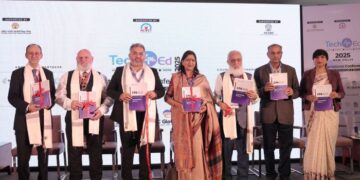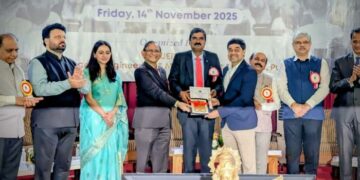Marwadi University (MU) Rajkot – a Centre of Excellence by the Government of Gujarat – has received the GEM5 rating by ASSOCHAM under its GEM Sustainability Certification Program for sustainable and green building design and construction.
MU’s environment friendly the state-of-the-art infrastructure, green campus, mass transportation system, 650 kW rooftop solar system, sewage treatment plant, rain water harvesting and many others towards a sustainable and green environment were considered for this certification. “PM Modiji’s emphasis on the net zero target at the Glasglow Summit is of prime importance and hence the responsibility of every citizen of our nation. Therefore, Marwadi University actively takes steps for such green initiatives and we are very excited to be recognized by bodies like ASSOCHAM,” says Prof. (Dr) Sandeep Sancheti, Provost (Vice-Chancellor), Marwadi University.
“GEM 5 Rating not only hones our efforts for a greener University campus but provides us with an opportunity to adapt to the efficient and effective ways of creating a sustainable environment,” adds Shri Jitubhai Chandarana, Co-Founder & Vice-Chairman, Marwadi University.
The GEM project awards GEM1 to GEM5 rating levels as per the requirements fulfilled and scores achieved, based on building’s architecture and elevation design, materials used during construction, HVAC, lighting and plumbing system designs, and water and energy consumption of the building. GEM 5 is the highest achievable rating in this program with 0-135 point scale. Such projects are a major example of demonstrative learning. Indulging in such projects gives a hands-on experience to students about raising concerns regarding the environment and contributing to effective solutions.
Till April 30 this year, 7,558 green building projects with a footprint of over 8 billion square feet are registered with the Indian Green Building Council (IGBC), as per CII. India has emerged as one of the leading countries in terms of sustainable building projects and ranks only second after US in terms of the number of green projects and built-up area.














